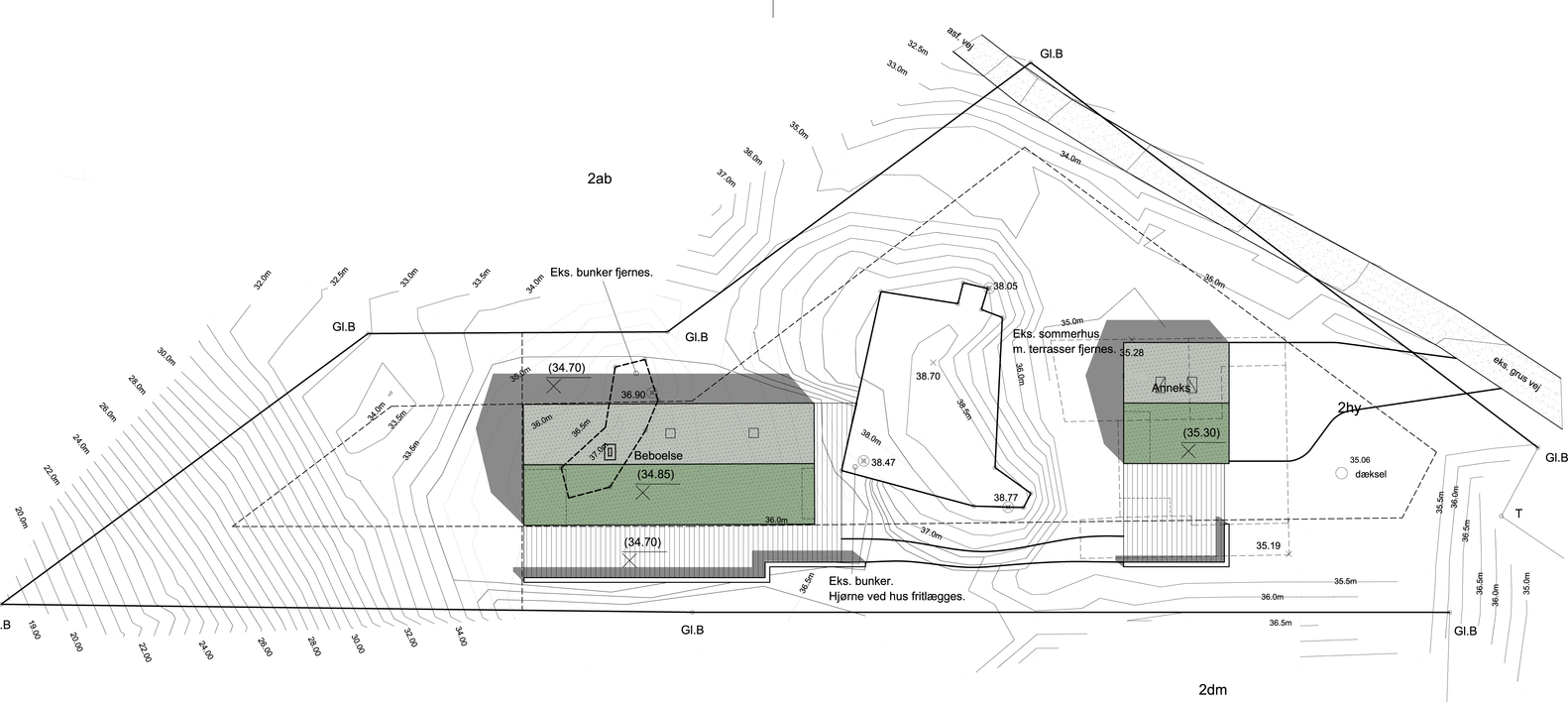Container Sale Office Atelier XÜK
2014-11-24 01:00
架构师提供的文本描述。该项目位于上海市青浦区。这是一个临时销售办公室的一个混合用途的商业综合体在它的西部。
Text description provided by the architects. The project is located at Qingpu district of Shanghai. It is a temporary sale office for a mix-use commercial complex to the west of it.
该项目的场地也是临时的:它位于两条线之间,一条是道路红线,另一条是建筑设置线。其宽度为10m,沿南北方向延伸。当整个开发完成后,网站将被设置为绿色.然而,销售办公室的寿命甚至会在此之前结束:当它的东侧的商业综合体开始,它将已经被挖掘地下室。因此,销售办公室将只使用一年左右。
The site of the project is also temporary: it is situated in-between 2 lines, one is the road redline and the other is the building set-back line. The width of it is 10m and it stretches along the north and south direction. When the whole development is finished, the site will be taken by the set-back green. However, the life of the sale office will end even before that: when the commercial complex to the east side of it starts, it will be already taken by the excavation of the basement. As a result, the sale office will be only used for about one year.
在这种具体的现场情况下,客户决定采用集装箱施工系统作为主要的建筑系统。采用该系统将保证速度和效率。其建筑表现形式的简洁性和直观性也将与其发展的认同相匹配。
The client decided to adopt container construction system as the main building system under this specific site situation. Adoption of this system will guarantee speed and efficiency. The simple and straight-forwardness of its architecture expression will also match with the identification of the development.
这个项目的有限预算迫使我们在设计之初就把重点放在一个非常实际的问题上:如何用最少的容器来包围最大的建筑面积(或体积)。对这个基本问题的回答导致了一种基本的偏移打桩方法.我们采用偏移打桩的方法来节省集装箱的数量,并形成一个最大的中庭空间来定位场地模型和商业讨论区。中庭双高,以南为主入口,对称.它的简洁和强大的空间秩序是理性设计方法的结果。建筑的构造,无论是外部空间还是外部空间,都得到了清晰的表达。
Limited budget of the project forced us to focus on one very practical question at the beginning of the design:how to enclose the maximum building area ( or volume ) with the minimum usage of containers. Answer to this basic question leads to a basic offset-piling method. We adopted the offset-piling method to save the number of the containers and forms a maximized atrium space for location of the site-model and the business discussion area. The atrium is double-height and facing south as the main entrance, it is symmetrical. It`s simple and strong space order is a result of rational design approach. Tectonic of the building is clearly expressed both for the exterior and exterior space.
偏移打桩法给中庭空间提供一个交错的正负空间界面:墙壁的正界面,开口的负界面。白天,负面界面,如开口,为中庭空间提供光和景观;夜间,我们定制的荧光墙垫圈,正面界面,如墙壁,被照亮,为中庭空间提供光和强烈的实质性表现。墙壁和开口、正面和负面界面在一天中不同的时间互换它们的角色,而空间的结构是完整的。
Offset-piling method gives the atrium space a staggered positive-negative space interface: Positive interface for the walls, negative interfaces for the openings. During the day time, negative interfaces, as for the openings, provide the atrium space with light and views; at night, with our customized florescent wall washers, positive interfaces, as for the walls, are lighted up and provide the atrium space with light and a strong presentation of materiality. The walls and the openings, the positive and the negative interfaces swap their roles at different times of a day, while the structure of the space is integrated.
北楼设有后台程序:收银台、卫生间、更衣室、行政管理等.这些程序有良好的组织和堆叠在2层,以有效的方式。
To the north of the building located the back-of-house program: cashier, toilet, changing room, administration and so on. These program are well organized and stacked in 2 floors in an efficient manner.
在中庭和后台程序之间,我们设计了一个像雕塑一样的楼梯.在几何上,它是对称和不对称的微妙平衡。在流通性和视觉体验方面,它被用作前部和后部之间的过渡。
In between the atrium and the back-of-house program, we designed a sculpture-like staircase. In terms of its geometry, it is a delicate balance of symmetry and asymmetry. In terms of circulation and visual experience, it is used as a transition between the front and the back area.
我们引入了一个额外的单元,一个统一的、单向倾斜的屋顶来覆盖整个建筑.添加这个元素是几个考虑的逻辑结果:在建筑表达上,我们希望建筑物更像一个“房子”,而不仅仅是一堆容器;在构造方面,我们更希望有另一个统一的单元与建筑物的具体基础相结合,在施工方面,偏移打桩法需要额外的覆盖来形成一个整体的围护结构,就建筑物的物理性能而言,原集装箱屋顶和附加屋顶所确定的空间是理想的保温层位置。保证室内空间的舒适度。
We introduced an additional element, an unified, one-direction inclined roof to cover the whole building. Addition of this element is the logic result of several considerations: in terms of the architectural expression, we would like the building to be more like a “house”, instead of just a pile of containers; In terms of the tectonics, we prefer to have another unified element to pair with the concrete foundation of the building, in terms of construction, the offset-piling method requires an additional coverage to form a total enclosure, in terms of the physical performance of the building, the space that is defined by the original container roof and the additional roof is perfect for location of the insulation layer, to guarantee comfort for the interior space.
排水问题也需要考虑。在我们的项目中,我们把排水管道看作是一个重要的构造要素,而不是仅仅是基础设施的一部分。管道分为四个部分,每个部分都有一个适当的长度,可以方便地通过中型卡车运输。这些管道固定在建筑物的主立面上,形成了一条游玩的“水迹”,独立于建筑物以北的刚性语言瀑布景观,将景观设计与建筑设计本身统一起来。
Drainage issue needs also to be considered. In our project, we regard drainage pipes as one important tectonic element, instead of a mere part of infrastructure. The pipe is divided into four parts, each of which has a proper length that could be easily transported by mid-size trucks. These pipes are fixed to the main elevation of the building, forming a playful “trace of water” that is independent for the rigid language water-fall landscape to the north of the building, and unified the landscape design with the architecture design itself.
 举报
举报
别默默的看了,快登录帮我评论一下吧!:)
注册
登录
更多评论
相关文章
-

描边风设计中,最容易犯的8种问题分析
2018年走过了四分之一,LOGO设计趋势也清晰了LOGO设计
-

描边风设计中,最容易犯的8种问题分析
2018年走过了四分之一,LOGO设计趋势也清晰了LOGO设计
-

描边风设计中,最容易犯的8种问题分析
2018年走过了四分之一,LOGO设计趋势也清晰了LOGO设计























































































.jpg)






